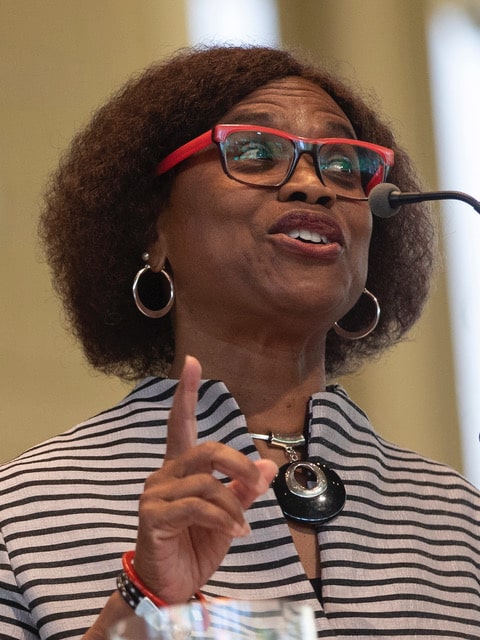Halloween is America’s “gay” holiday.
In the words of lesbian poet and scholar Judy Grahn, Halloween is “the great gay holiday.”
And this weekend, after months of lockdown due to COVID, lavish costumes will resurface, especially among us LGBTQ+ revelers.
Back in the day, Halloween — the night before All Hallows’ Day (All Saints‘ Day) — was linked to the ancient Celtic festival Samhain (“summer’s end”) in the British Isles. And because the celebration is associated with mystery, magic, superstition, witches and ghosts, the festivity, not surprisingly, was limited by colonial New Englanders because of their Puritanical beliefs.
But today it’s an LGBTQ+ extravaganza that rivals — if not out-showcases — Pride festivals.
Long before June officially became Gay Pride Month and October became Coming Out Month for the LGBTQ+ community, Halloween was unofficially our yearly celebrated “holiday.” It dates as far back as the 1970s, as a massive annual street party in San Francisco’s Castro district.
By the 1980s, gay enclaves such as Key West, West Hollywood and Greenwich Village held annual Halloween street parties. And the parades the night of Halloween did, and still do, draw straights and LGBTQ+ spectators out to watch.
Gay cultural influence on Halloween has become such an unstoppable phenomenon here and abroad that University of Florida anthropology professor Jack Kugelmass described Halloween as an emerging gay “high holiday” in his 1994 book Masked Culture: The Greenwich Village Halloween Parade:
The “masked culture” first developed by the gays of San Francisco has reached across the lines of orientation — and now jumped across the boundaries between nations and languages. It’s not just a party. It’s an ideal of personal emancipation, self-expression, and self-fulfillment — an ideal that loses none of its power when it takes the form of a sexy nurse’s outfit.
Nicholas Rogers, author of the 2003 book Halloween: From Pagan Ritual to Party Night, points out that while everyone enjoys Halloween:
It has been the Gay community that has most flamboyantly exploited Halloween’s potential as a transgressive festival, as one that operates outside or on the margins of orthodox time, space, and hierarchy. Indeed, it is the Gay community that has been arguably most responsible for Halloween’s adult rejuvenation.
Halloween allows many LGBTQ+ Americans at least one night annually, on October 31, of safely being out and “unmasked” while remaining closeted. The community parties the entire night as if there is no tomorrow, and for many there isn’t. Like its pagan antecedent, Halloween provides an outlet for cross-dressing and gender-bending LGBTQ+ who are ostracized by mainstream society.
But as Halloween flourished as a gay cultural phenomenon, so too grew a backlash by fundamentalist Christians with their “Hell Houses.” And these Christians targeted children. (Believing Hell Houses are no longer up and running in 2021, I’ll speak of them in the past tense.)
Hell Houses were a contemporary form of both anti-LGBTQ+ bullying and witch-hunting. Created in the late 1970s by deceased fundamentalist pastor Jerry Falwell, Hell Houses were religious alternatives to traditional haunted houses. They were tours given by evangelical churches across the country designed to scare and bully people away from myriad sins. And one of those “sins” was homosexuality.
In 2006 the National Gay and Lesbian Task Force put out a report titled “Homophobia at ‘Hell House’: Literally Demonizing Lesbian, Gay, Bisexual, and Transgender Youth,” explaining how the Hell Houses specifically targeted youth:
Instead of spooking youth with ghosts and monsters, Hell House tour guides direct them through rooms where violent scenes of damnation for a variety of “sins” are performed, including scenes where a teenage lesbian is brought to Hell after committing suicide, and a gay man dying of AIDS is taunted by a demon who screams that the man will be separated from God forever in Hell.
“Scaling Satan,” a study published in The Journal of Psychology in 2001, concluded that a strong belief in Satan is directly related to intolerance of LGBTQ+ people. Religious leaders who supported Hell Houses believed that by scaring LGBTQ+ youth into heterosexual behavior, they were saving souls. Their attempt to turn our most cherished holiday against us failed — and Halloween remains our second Pride.
Our influence on culture is being acknowledged and celebrated. Kwanzaa is a black holiday, St. Patrick’s Day is an Irish holiday, and now Indigenous Peoples’ Day is a Native American holiday. Maybe someday soon, Halloween will be officially acknowledged as a gay holiday.
Happy Halloween!
You may also enjoy:
You Are God’s Masterpiece: Celebrating 25 Years of Being a Whosoever
Bulletproof Faith: A Spiritual Survival Guide for Gay and Lesbian Christians

Public theologian, syndicated columnist and radio host Rev. Irene Monroe is a founder and member emeritus of several national LBGTQ+ black and religious organizations and served as the National Religious Coordinator of the African American Roundtable at the Center for LGBTQ and Religion Studies in Religion at Pacific School of Religion. A graduate of Wellesley College and Union Theological Seminary, she served as a pastor in New Jersey before studying for her doctorate as a Ford Fellow at Harvard Divinity School and serving as the head teaching fellow of the Rev. Peter Gomes at Memorial Church. She has taught at Harvard, Andover Newton Theological Seminary, Episcopal Divinity School and the University of New Hampshire. Her papers are at the Schlesinger Library at Radcliffe College’s Research Library on the History of Women in America.
